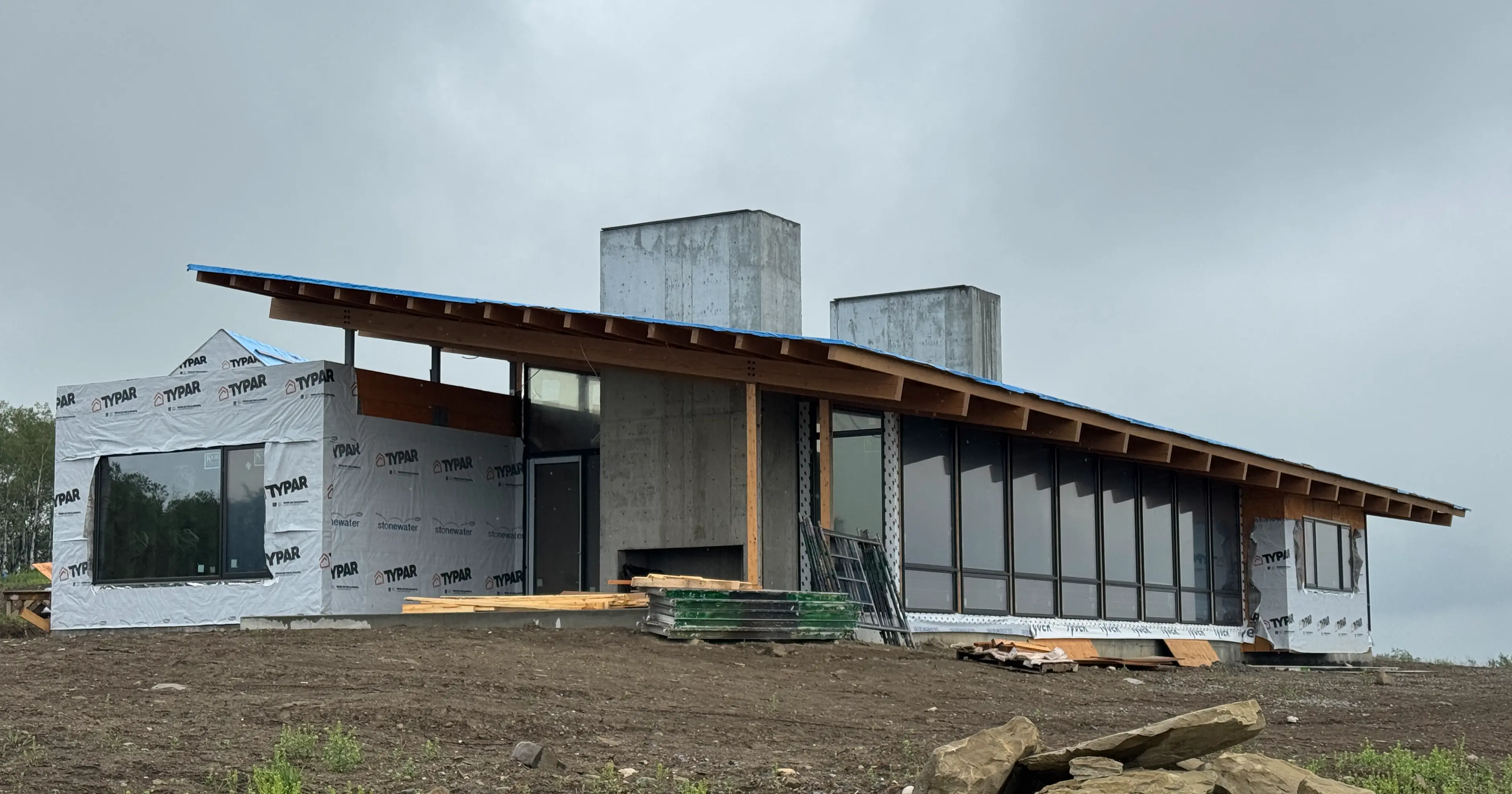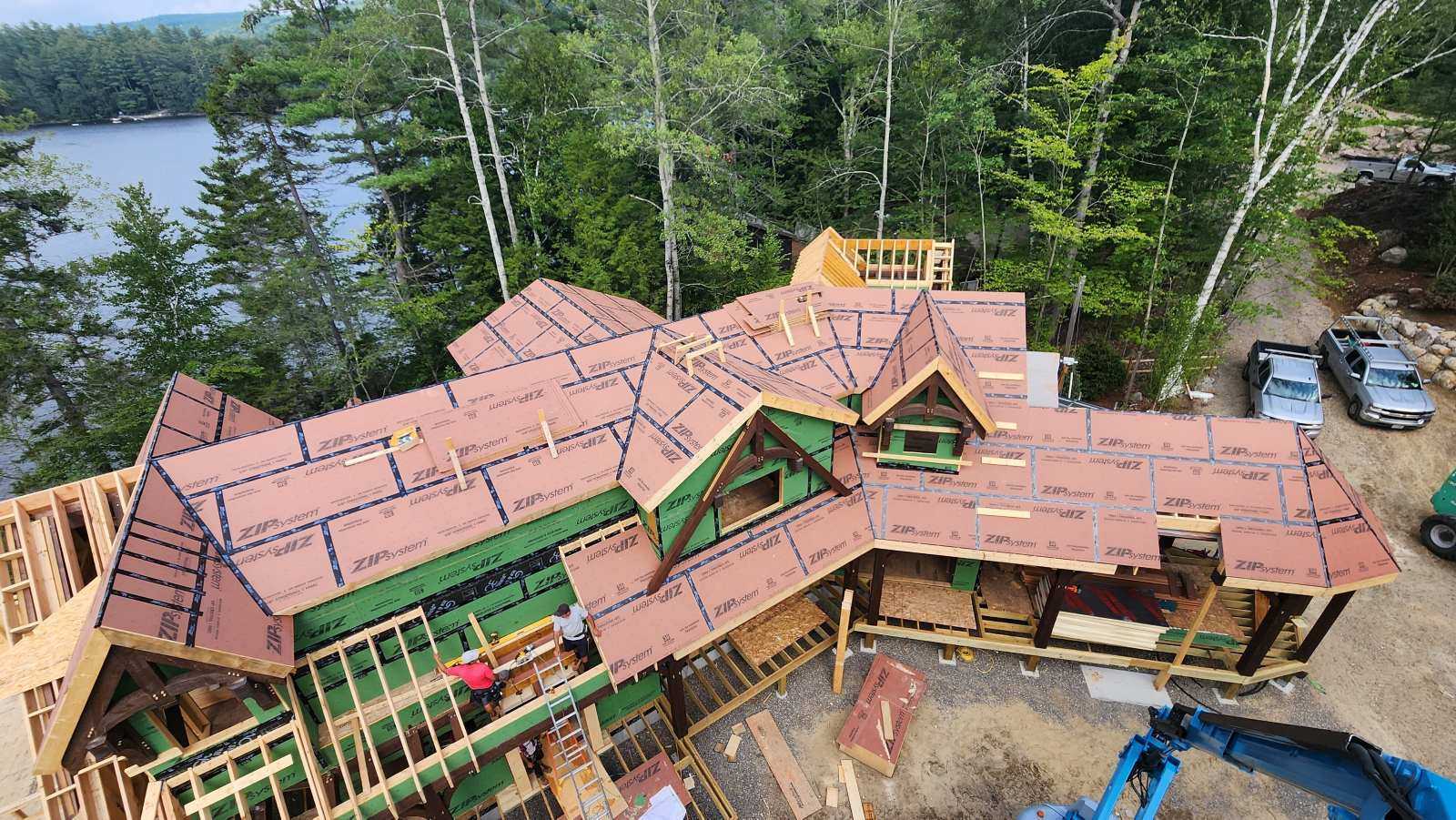.webp)
Blog
November 24, 2025
Investing in a timber frame home is an exciting endeavor that combines the allure of traditional craftsmanship with modern construction techniques. Whether you're building a custom home for your family or a second vacation home, understanding the time and financial commitments involved is essential before starting your project. This guide will provide you with a comprehensive overview of what to expect, tips for effective planning and budgeting, and the importance of working with experienced professionals.
Please note that the timelines provided are general estimates. The actual duration of each phase can fluctuate based on various factors such as design complexity, availability of materials, weather conditions, and local permitting processes.
Building a timber frame home is a multi-stage process that requires careful planning and coordination. Below is a generalized timeline give you an idea of what to expect, operating under the assumption that you already have acquired land, topographic survey and geotechnical soil tests have been completed:
This phase involves defining your vision and translating it into detailed plans. It includes initial consultations, conceptual designs, and the creation of detailed architectural drawings.
This phase involves submitting your detailed plans to local authorities for review and approval. It ensures your project complies with zoning laws, building codes, and environmental regulations.
The construction phase involves the actual building of your home, from laying the foundation to finishing the interiors. The timeline can vary based on factors like weather, complexity of the design, and availability of materials.
This timeline includes both the arrival of custom timber materials and the entire construction process from start to finish. Factors that can influence these timelines include weather delays, changes in project scope, availability of specialized labor, and unforeseen site conditions.
The cost of building a timber frame home varies based on several factors, including the size of the home, design complexity, and materials used. Here are some key considerations:
In luxury timber frame construction, fully finished, turnkey home costs typically range from $600 to $1500 per square foot, depending on the complexity of the design and the quality of materials used. For example, a 2,500-square-foot home could cost between $1,500,000 and $3,750,000 to build. This range can vary significantly based on factors such as location, finish, customization, and market conditions.
Setting a realistic budget is crucial for the success of your timber frame home project. To achieve this, start by working closely with your builder and architect to create detailed cost estimates. This involves breaking down the costs of materials, labor, and other expenses associated with the construction process. Ensure that every aspect of the project is accounted for, from the initial site preparation to the final finishing touches.
Including a contingency fund is equally important. Typically, this should be around 10-20% of your total budget to cover any unexpected expenses that may arise. Construction projects often encounter unforeseen issues such as delays due to weather, additional material requirements, or unexpected site conditions. Having a financial buffer helps prevent these surprises from derailing your project.
When planning your budget, prioritize essential features first. Focus on the core elements that are necessary for the functionality and structural integrity of your home. Once these are covered, consider optional upgrades that can enhance your living experience, such as high-end finishes, landscaping, or smart home features. Making a clear distinction between needs and wants will help you stay within budget and avoid unnecessary expenditures.
Working with experienced professionals is another key aspect of effective planning and budgeting. The expertise and knowledge that skilled builders and designers bring to the table can significantly impact the outcome of your project. Begin by conducting thorough research to identify professionals who have a proven track record in timber frame construction. Look for portfolios of past projects, read client testimonials, and ask for references to gauge their reliability and quality of work.
In addition to checking their past work, verify their certifications and memberships in professional organizations. Credentials such as being a member of the Timber Framers Guild or having certifications from recognized industry bodies indicate a commitment to maintaining high standards and staying updated with the latest construction practices. This not only assures you of their expertise but also provides a level of accountability and professionalism.
Building a strong relationship with your chosen professionals is crucial. Open communication, mutual respect, and a shared vision for the project will foster a collaborative environment where everyone is working towards the same goal. Experienced professionals can offer valuable insights, suggest cost-saving measures, and help you navigate the complexities of the construction process.
Planning for contingencies is essential to managing a successful project. Construction projects, by their nature, can be unpredictable, and being prepared for potential challenges is vital. Flexibility is key—be ready to adapt your plans as needed to address any issues that arise. This might include adjusting timelines, reallocating resources, or making design modifications.
Regular updates and open communication with your project team are fundamental to effective contingency planning. Schedule frequent progress meetings to review the status of the project, discuss any emerging issues, and plan the next steps. Keeping all stakeholders informed ensures that everyone is on the same page and can respond promptly to any changes.
Maintaining a detailed project schedule that includes milestones and deadlines helps you track progress and identify potential delays early. When issues do arise, having a contingency plan in place allows you to address them efficiently without causing significant disruptions. This proactive approach minimizes the impact of unforeseen events and keeps your project moving forward smoothly.
By incorporating these strategies into your planning and budgeting process, you can set a strong foundation for your timber frame home project. Thorough preparation, working with experienced professionals, and planning for contingencies will help you navigate the complexities of construction and achieve your vision successfully.
Investing in a timber frame home requires careful planning and a commitment to quality. By understanding the time and financial investments involved, and by working with experienced professionals, you can ensure a successful project.
To continue your planning journey, explore our guide Planning a Custom Timber Frame Home: 7 Key Steps for Success, where we share how to define your vision, align design and budget, and coordinate build logistics with confidence


Discover the 7 key steps to planning a custom timber frame home with confidence. From defining your vision to coordinating design, budget, and build logistics, Canadian Timberframes shares how to set your project up for success.
Read more


Timber framing combines natural beauty with strength, using glulam and solid timber-each with unique advantages. Glulam offers engineered strength and design flexibility for long spans and curves, while solid timber provides authentic character and warmth. Both are sustainable, and blending them lets you balance performance with natural aesthetics to create strong, visually appealing timber structures.
Read more


Discover how Canadian Timberframes streamlines the custom timber frame home building process with expert design, sustainable materials, and comprehensive support from consultation to completion. Learn more about the custom timber frame home building process.
Read more
.webp)

This blog post will explore some stunning timber frame houses built in Colorado and provide insights into the qualities to look for when choosing a timber frame supplier.
Read more


Pre-finished timber frames are changing the way custom homes are built. Learn how builder partners Jason Drouin Custom Homes and Hayword & Co use them to accelerate timelines, reduce waste, and deliver exceptional craftsmanship.
Read more